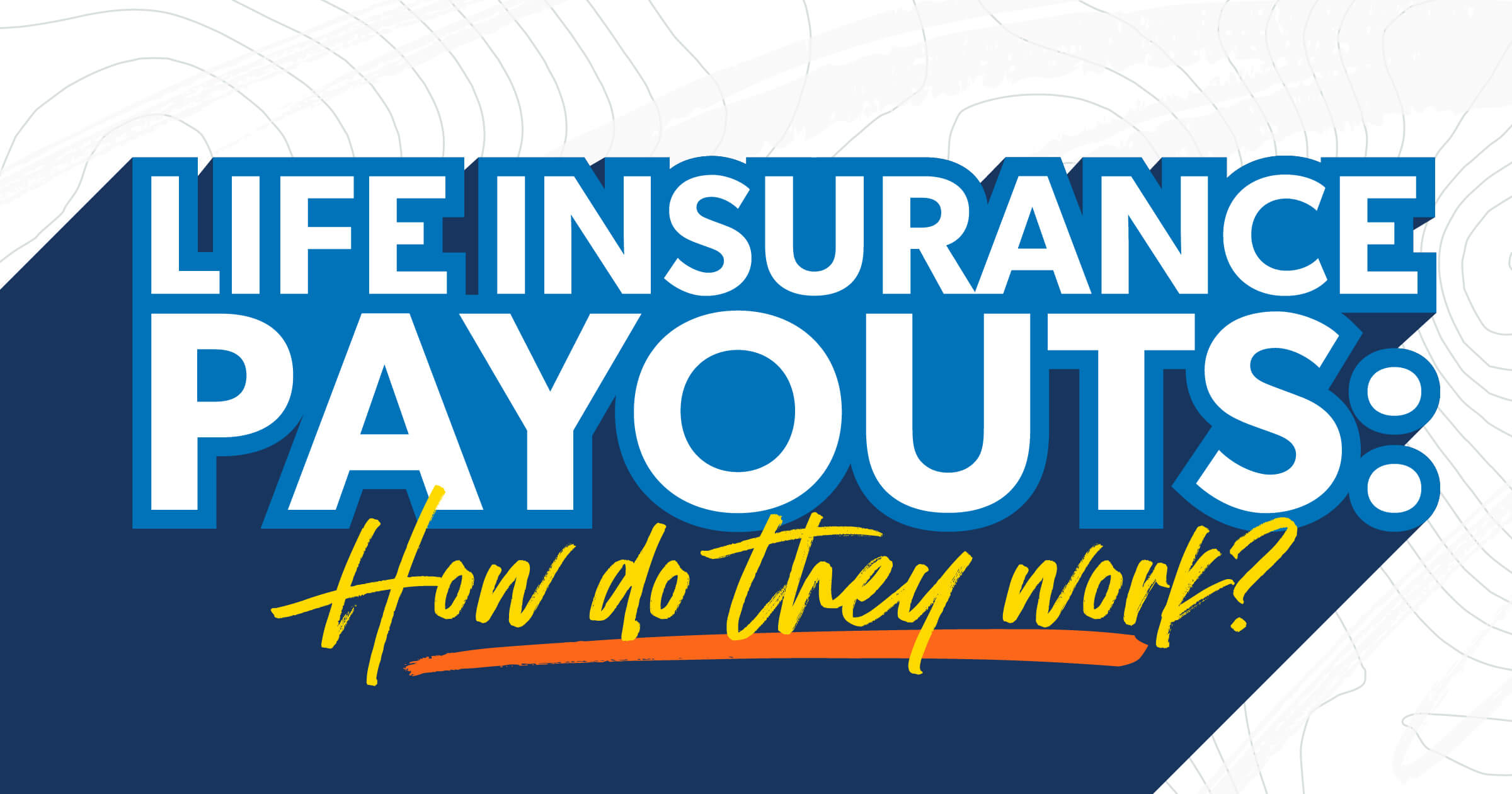Home>Finance>How Long Does It Take To Get A Life Insurance Policy?


Finance
How Long Does It Take To Get A Life Insurance Policy?
Published: October 15, 2023
Discover how long it takes to secure a life insurance policy and safeguard your financial future. Explore the finance options available and get protected today!
(Many of the links in this article redirect to a specific reviewed product. Your purchase of these products through affiliate links helps to generate commission for LiveWell, at no extra cost. Learn more)
Table of Contents
Introduction
Life insurance is a financial tool that provides protection and peace of mind for your loved ones in the event of your untimely demise. It serves as a safety net that ensures your family’s financial security and helps cover expenses such as mortgage payments, education costs, and daily living expenses. While the importance of life insurance is widely recognized, many people are often curious about how long it takes to get a life insurance policy.
The time it takes to obtain a life insurance policy can vary depending on several factors, including the type of policy, the insurer’s underwriting process, and the completion of necessary medical examinations. In general, the process can range from a few days to several weeks.
Understanding the factors that affect the timeframe for getting a life insurance policy can help you set realistic expectations and plan accordingly. This article will delve into these factors and guide you through the application process, underwriting process, and policy approval to provide a comprehensive understanding of how long it typically takes to secure a life insurance policy.
Factors Affecting the Timeframe for Getting a Life Insurance Policy
Several factors influence the timeframe for obtaining a life insurance policy. These factors can vary from one insurer to another and may depend on individual circumstances. Let’s explore the key factors that can impact the speed at which you can secure a life insurance policy:
- Type of Policy: The type of life insurance policy you choose can significantly impact the time it takes to get coverage. Simplified issue policies, which typically do not require a medical exam, can be approved and issued relatively quickly, sometimes within a few days. On the other hand, fully underwritten policies, which involve a more comprehensive assessment of your health and lifestyle, may take longer to process.
- Underwriting Process: The underwriting process is a crucial step in determining your eligibility for a life insurance policy. During this process, the insurer evaluates various factors such as your age, health history, lifestyle habits, and medical records. The complexity of the underwriting process and the amount of information required can impact the overall timeframe. Some insurers have streamlined underwriting processes that can expedite the approval process.
- Medical Examinations and Testing: Depending on the policy type and coverage amount, a medical examination may be necessary to assess your health condition. The examination may include a physical check-up, blood work, and other medical tests. Scheduling and completing these examinations, as well as waiting for the results, can potentially extend the timeframe for getting your policy.
- Waiting Periods: In some cases, there may be waiting periods associated with certain policy features. For example, if you are applying for a policy with a critical illness rider or a disability income rider, there may be waiting periods before those benefits become active. It’s important to understand these waiting periods and factor them into your timeline.
- Accuracy and Completeness of Application: Providing accurate and complete information on your life insurance application is essential for a timely approval. Any discrepancies or missing details may lead to further requests for information, which can prolong the underwriting process. Double-checking your application for errors or omissions before submission can help expedite the process.
- Insurance Company Policies and Workload: Each insurance company has its internal policies and procedures, which can influence the time it takes to process applications. Factors such as the current workload, staffing levels, and efficiency of the insurer’s systems can impact the overall timeframe. Researching and selecting a reputable insurer known for efficient processing can help expedite the policy issuance.
It’s important to note that while these factors can affect the timeline, insurers strive to process applications as efficiently as possible, ensuring that policyholders receive coverage in a timely manner. By understanding these factors, you can manage your expectations and plan accordingly to secure a life insurance policy based on your specific needs and circumstances.
Application Process for Life Insurance
The application process for life insurance typically involves several steps that you need to complete before your policy can be issued. Here’s an overview of the typical application process:
- Research and Comparison: Before applying for life insurance, it’s important to research different insurance companies and policy options to find the best fit for your needs. Consider factors such as the coverage amount, policy term, premium affordability, and the insurer’s reputation and financial stability.
- Quote and Application: Once you’ve identified a suitable insurer and policy, you can request a quote and proceed with the application. The application will require you to provide personal information, such as your age, gender, occupation, and lifestyle habits.
- Health and Medical History: As part of the application, you will need to disclose your medical history, including any existing health conditions, medications, surgeries, or treatments. Be prepared to provide details about your family’s medical history as well.
- Medical Exams and Testing: Depending on the policy type and coverage amount, a medical examination may be required. The insurer will typically arrange for a paramedical professional or nurse to conduct the examination, which may include measurements of height, weight, blood pressure, blood tests, and urine samples. These tests help assess your overall health and determine the risk factors associated with insuring you.
- Underwriting Process: After you submit your application and complete any required medical exams, the insurer will initiate the underwriting process. During this stage, the insurer evaluates your application, medical records, and test results to assess your insurability. This process can involve reviewing your medical history, lifestyle factors, and credit history. The insurer may also request additional information or clarification if needed.
- Policy Approval: Once the underwriting process is complete, the insurer will decide whether to approve your application and issue a policy. If approved, you will receive a policy offer outlining the coverage details, premium amount, and any applicable riders or endorsements.
- Premium Payment: To activate the policy, you will need to make the initial premium payment. The payment method and frequency will depend on the insurer’s policies and your preferences. You may choose to pay annually, semi-annually, quarterly, or monthly.
- Policy Delivery: After receiving your premium payment, the insurer will finalize the policy and deliver it to you. Traditionally, policies were delivered in physical form via mail. However, many insurers now offer electronic delivery options, allowing you to access your policy documents digitally.
The length of the application process can vary depending on factors such as the completeness of your application, the need for medical exams, and the insurer’s underwriting process. While simplified issue policies may have a shorter application process, fully underwritten policies tend to take longer due to the comprehensive assessment of your health and risks. By understanding the steps involved, you can streamline the application process and ensure prompt policy issuance.
Underwriting Process
The underwriting process is a crucial step in obtaining a life insurance policy. It involves the evaluation of various factors to assess the risk associated with insuring an individual. The underwriting process helps determine the premium rate, coverage amount, and policy terms. Here’s an overview of the underwriting process:
1. Evaluation of Application: Once you submit your life insurance application, the insurer’s underwriting team will review and evaluate it. They will carefully examine the information you provided, including your personal details, medical history, lifestyle habits, and any additional documentation required.
2. Medical Underwriting: The underwriter will assess your health condition based on the information you provided in the application. They may request medical records from your healthcare providers or request additional medical exams and tests to gain a comprehensive understanding of your health. These exams may include blood tests, urine tests, EKGs, and screenings for specific medical conditions. The results of these tests will help the underwriter determine your insurability and the appropriate risk class.
3. Lifestyle Underwriting: In addition to medical underwriting, underwriters will also consider your lifestyle habits, such as smoking, alcohol consumption, recreational activities, and occupation. They will evaluate these factors to determine the level of risk you present for the insurance company. Applicants who engage in high-risk activities may face higher premiums.
4. Actuarial Analysis: Actuaries play an important role in the underwriting process. They analyze statistical data, mortality tables, and other relevant factors to calculate the likelihood of policy claims and determine the appropriate premium rates. Actuarial analysis helps ensure that the insurer sets premiums that adequately cover the risk presented by the applicant.
5. Decision and Risk Classification: Based on the evaluation of your application, medical records, test results, and actuarial analysis, the underwriter will make a decision on your insurability and determine your risk classification. This risk classification will influence your premium rate and policy terms. The underwriter may assign you to a preferred risk class if you have no significant health issues or risky habits, or to a substandard risk class if there are health concerns or high-risk activities involved.
6. Policy Offer: Once the underwriting process is complete, and your risk classification is determined, the insurer will generate a policy offer. This offer will outline the coverage amount, premium rate, and policy terms. You will have the opportunity to review the offer and decide whether to accept it or make any necessary adjustments before finalizing the policy.
The duration of the underwriting process can vary depending on the complexity of your case, the need for medical exams, and the availability of medical records. Simplified issue policies that require no medical exams typically have a faster underwriting process, while fully underwritten policies may take several weeks. It’s important to provide accurate and thorough information during the application process to ensure a smooth underwriting process and maximize your chances of obtaining the desired coverage.
Medical Examinations and Testing
As part of the life insurance application process, you may be required to undergo medical examinations and testing. These exams are conducted to assess your overall health and determine the risk factors associated with insuring you. Here’s what you need to know about medical examinations and testing:
1. Scheduling the Examination: Once you submit your life insurance application, the insurance company will typically arrange for a medical examination, which is usually conducted by a paramedical professional or nurse. They will coordinate with you to schedule a convenient time and location for the exam, which can be done at your home, workplace, or a medical facility.
2. Physical Check-up: The medical examination will generally include a physical check-up to assess your overall health. The professional conducting the exam will measure your height, weight, blood pressure, and pulse rate. They will also evaluate your general appearance and note any visible health conditions.
3. Blood and Urine Samples: During the examination, the professional may collect blood and urine samples for laboratory testing. Blood tests can reveal information about your cholesterol levels, liver and kidney function, and the presence of certain diseases or conditions. Urine tests can provide insights into your kidney function, detect potential drug use, and assess for the presence of certain medical conditions.
4. EKG or Electrocardiogram: Depending on your age and medical history, an electrocardiogram (EKG) may be performed to evaluate the electrical activity of your heart. This test can help detect any irregularities or abnormalities in your heart rhythm.
5. Medical History Review: The paramedical professional may also review your medical history and inquire about any previous or ongoing medical conditions, surgeries, medications, or treatments. It’s important to provide accurate and detailed information during this review.
6. Additional Testing: Based on your individual circumstances, additional tests or screenings may be necessary. This can include more extensive bloodwork, imaging tests like X-rays or ultrasounds, or specialized evaluations by medical specialists. The need for these additional tests will depend on the insurer’s underwriting guidelines and your specific health situation.
It’s important to note that the medical examinations are generally non-invasive and painless. The paramedical professionals conducting the exams are trained to ensure your comfort and privacy throughout the process. The results of these medical exams and tests provide the insurer with a clearer picture of your health and help determine your risk classification and premium rate.
The duration between the scheduling of the exam and the completion of the underwriting process can vary. It depends on factors such as the availability of healthcare providers, the need for additional testing, and the efficiency of the laboratory processing the samples. It’s advisable to schedule the medical examination promptly and provide any requested documentation or information to avoid any delays in the overall life insurance application process.
Policy Approval and Issuance
After completing the underwriting process and medical examinations, the insurer will review your application and make a decision regarding the approval and issuance of your life insurance policy. Here’s what you can expect during the policy approval and issuance stage:
1. Underwriter Review: The underwriter will carefully review your application, medical records, test results, and any additional information provided during the underwriting process. They will assess your overall insurability based on factors such as your health condition, medical history, lifestyle habits, and the level of risk you present.
2. Decision Making: Once the underwriter has completed their review, they will make a decision regarding your policy’s approval and issuance. The decision may fall into one of several categories, including:
- Approved: If the underwriter determines that you meet the criteria for insurability, your policy will be approved for issuance.
- Approved with Modifications: In some cases, the underwriter may approve your policy but impose certain modifications. These modifications could include a higher premium rate, exclusions for specific health conditions, or limitations on coverage.
- Other Requirements: In certain situations, the underwriter may request additional information or documentation before finalizing the policy. This could include clarification on medical conditions, additional medical tests, or financial verification.
- Postponed: In instances where the underwriter requires more time to gather information or conduct further evaluations, the policy approval may be postponed temporarily.
- Declined: If the underwriter determines that you do not meet the insurer’s underwriting guidelines or present too high a risk, your application may be declined. In this case, you will be notified of the decision and provided with an explanation.
3. Policy Offer: If your application is approved, you will receive a policy offer from the insurer. The policy offer will outline the coverage details, premium amount, policy term, and any additional riders or endorsements that you have chosen or that were included based on your eligibility. Take the time to carefully review the policy offer to ensure that it aligns with your expectations and needs.
4. Premium Payment: To activate the policy, you will need to make the initial premium payment as specified in the policy offer. You can typically choose between different payment frequencies, such as annual, semi-annual, quarterly, or monthly. Make sure to pay the premium on time to ensure that your coverage is in effect.
5. Policy Issuance: Once you have accepted the policy offer and made the premium payment, the insurer will finalize the policy and issue it to you. Traditionally, policies were delivered in physical form via mail. However, many insurers now offer electronic policy delivery options, allowing you to access your policy documents digitally.
The time it takes to receive the policy offer and complete the policy issuance can vary depending on factors such as the insurer’s internal processes, workload, and the clarity of the application. In general, the process can take a few days to several weeks. It’s important to carefully review the policy offer, seek clarification if needed, and promptly fulfill any requirements to ensure a smooth and efficient policy approval and issuance.
Electronic Policy Delivery
With advancements in technology, many life insurance companies now offer the convenience of electronic policy delivery. Instead of receiving your life insurance policy in physical form through traditional mail, you can opt to receive it electronically. Here’s what you need to know about electronic policy delivery:
1. Digital Policy Documents: Electronic policy delivery involves receiving your policy documents digitally, usually in the form of PDF files. These digital documents contain all the necessary information and terms of your life insurance policy, including the coverage details, policy term, premium amount, riders or endorsements, and other relevant information.
2. Benefits of Electronic Delivery: Electronic policy delivery offers several benefits, such as:
- Instant Accessibility: With electronic delivery, you can access your policy documents instantly, eliminating the need to wait for physical mail delivery.
- Convenience: You can view and store your policy documents on your electronic devices, such as your computer, smartphone, or tablet, making it easily accessible whenever you need to reference or review your policy.
- Reduced Paperwork: Electronic delivery helps reduce paper waste, making it a more environmentally friendly option.
- Enhanced Security: Digital policy documents are often securely encrypted to protect your personal and financial information.
3. Consent and Authorization: Before opting for electronic policy delivery, you will need to provide your consent and authorization to receive your policy documents electronically. This is typically done during the application process or when the policy is being finalized. By providing your consent, you indicate your agreement to receive your policy documents electronically.
4. PDF Viewing Software: To view and access your electronic policy documents, you will need a PDF viewing software, such as Adobe Acrobat Reader, which is widely available for free. Most devices have built-in PDF viewers or readily available apps that allow you to open and view PDF files.
5. Secure Delivery: Insurance companies take measures to ensure the secure delivery of electronic policy documents. They may use password-protected files or send the documents via secure email or online portals that require authentication for access. This helps protect your policy documents from being accessed by unauthorized individuals.
6. Print Option: While electronic policy delivery primarily involves digital documents, you typically have the option to print your policy documents if you prefer to have a physical copy. However, make sure to consider the environmental impact and the security of printed documents if you choose to do so.
Important: It’s essential to safeguard your electronic policy documents by regularly backing them up and keeping secure digital copies. Additionally, inform your beneficiaries or loved ones about the existence and location of your electronic policy documents to ensure they can access them when needed.
Electronic policy delivery provides a convenient, efficient, and eco-friendly method of receiving and storing your life insurance policy documents. By choosing electronic delivery, you can easily access and manage your policy while contributing to a more sustainable future.
Conclusion
Securing a life insurance policy is an important step in protecting the financial well-being and future of your loved ones. While the timeframe for getting a life insurance policy can vary, understanding the factors that affect the process can help you set realistic expectations and plan accordingly.
During the application process, it’s crucial to research different insurance companies and policy options to find the best fit for your needs. Providing accurate and complete information in your application will help streamline the underwriting process and expedite policy approval.
Medical examinations and testing are often necessary to assess your health condition and determine your insurability. By promptly completing these exams and providing necessary medical information, you can help speed up the underwriting process.
Once your application is approved, you will receive a policy offer outlining the coverage details, premium amount, and policy terms. Making the initial premium payment on time is essential to activate the policy.
With the convenience of electronic policy delivery, you have the option to receive your policy documents digitally. This allows for instant accessibility, reduced paperwork, enhanced security, and eco-friendliness.
In conclusion, the timeframe for getting a life insurance policy typically ranges from a few days to several weeks. By understanding the application process, underwriting process, medical examinations, policy approval, and electronic policy delivery, you can navigate the journey more effectively and ensure the financial protection your loved ones deserve. Remember, it’s always recommended to consult with a qualified insurance professional who can guide you through the process and help you make informed decisions based on your individual circumstances.














